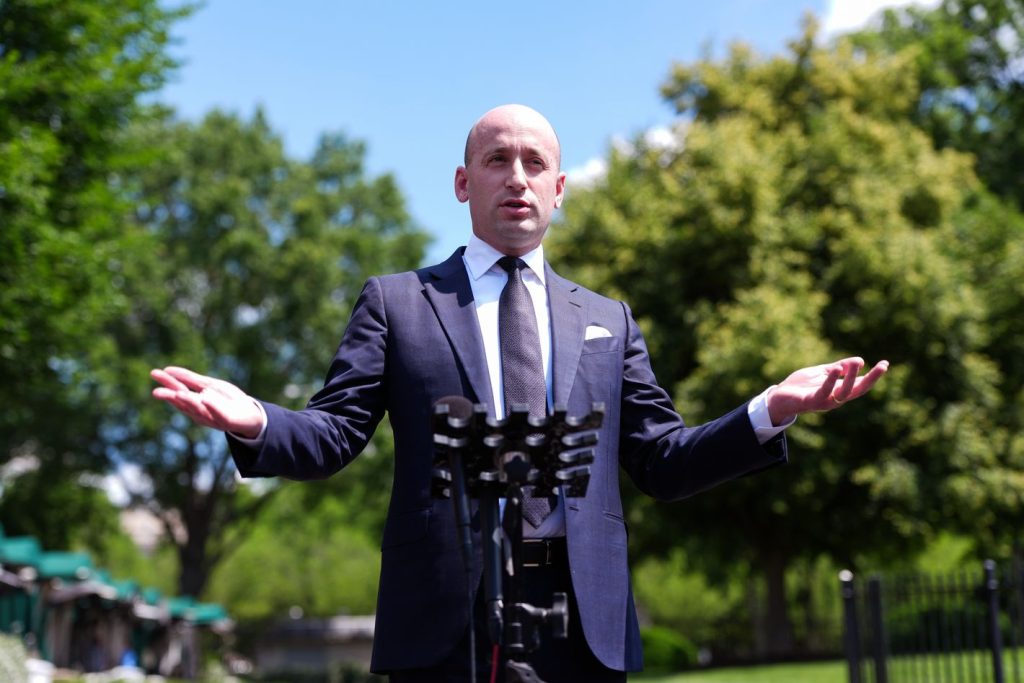Photo: Kevin Dietsch/Getty Images
A lot of what the second Trump administration has done in 2025 is unprecedented, including such innovations as DOGE disrupting the federal bureaucracy, the challenging of any limitations on presidential power, the many executive orders targeting the president’s enemies, and the deployment of MAGA social-media-influencer rhetoric in official federal-government communications. In this context, where 2024 Trump supporters are constantly being asked “Did you vote for this?,” warmed-over outrages from the first Trump administration feel a bit underwhelming.
The one retread policy initiative that might break through the general madness is the latest travel ban, announced via a Trump proclamation on June 4. The original Muslim travel ban, issued on January 27, 2017, was a really big deal. It spurred chaos at airports, protests in the U.S. and around the world, and a horrified realization among elites that Trump’s oft-expressed bigotry wasn’t just a campaign gimmick; nativist White House adviser Stephen Miller had some real power after all.
The first travel ban had a tortured history in the federal courts, with judicially forced revisions eventually leading to a green light from the U.S. Supreme Court in June 2018. The 2025 iteration — which isn’t officially a Muslim travel ban but just happens to target a lot of Muslim countries — clearly reflects the legal guardrails the Supreme Court established in Trump’s first term, as the BBC reported:
US immigration law expert Christi Jackson said the new ban suggested “lessons have been learned” from Trump’s first attempt.
The latest ban was not being implemented immediately, the restrictions were “wider in scope” and it had “clearly defined” exemptions, she told the BBC.
Professor of law and former US attorney Barbara McQuade said the last travel ban had “caused chaos at the border”, while this time Trump had given some advance notice.
“The first time around it included lawful permanent residents or Green Card holders, people who had established status in the United States, which courts found to be a violation of the Constitution,” she told BBC Newshour.
“This time I think there has been more thought given to this,” she said, adding it was “very likely” to be upheld by the Supreme Court.
As was the case in 2017, the administration’s words in promulgating the ban could become as problematic as its actual language. Trump made it abundantly clear that the ban was triggered by the actions of an immigrant who is actually not subject to it, NBC News notes:
Trump began a video address Wednesday by citing the recent violence in Boulder, Colorado, where an Egyptian man seeking asylum with an expired tourist visa injured at least 12 demonstrators in what city officials called an antisemitic attack, as justification for the renewed travel ban.
Egypt is not on the list of banned countries, but its absence speaks to the importance of Egyptian influence both on American Middle East policy and in the region at large, said Ahmed Aboudouh, an associate fellow at Chatham House, a London-based think tank.
So Trump’s Middle East politics protects Egyptians from a travel ban, which means the only reason the Colorado terrorist is relevant is his religion and his immigration status. There are, however, some frequently hated-on-by-Trump countries on the travel-ban list that aren’t majority Muslim at all, as NPR explains:
The full ban applies to foreign nationals from Afghanistan, Myanmar (Burma), Chad, Republic of the Congo, Equatorial Guinea, Eritrea, Haiti, Iran, Libya, Somalia, Sudan and Yemen.
The partial ban applies to people from Burundi, Cuba, Laos, Sierra Leone, Togo, Turkmenistan and Venezuela.
So it’s hard to simply typecast this travel ban, and it may well pass legal muster. But perhaps the most important reason it won’t spur as much chaos, fear, and outrage as its predecessor is the broader context. This administration isn’t just tightening travel to the U.S. from other countries. It’s all but eliminating access to the U.S. by refugees; using out-front deliberate terror tactics to speed the deportation (and self-deportation) of immigrants who either never had or have suddenly lost legal status; dumping deportees in prisons and no-man’s-lands in other countries; and threatening even U.S. citizens with the potential loss of their right to live in the United States. Compared to all this frenzy of xenophobia, a mere 19-nation (12 total, seven partial) travel ban seems a lower-order concern.
This is just one of many examples where Trump’s strategy seems to be a combination of “flooding the zone” with wide-ranging offensive policies that both political opponents and the courts have to sort through constantly, and a “two steps forward, one step back” approach where even defeats in the court or the court of public opinion leave many goalposts permanently moved. It’s enough to give you vertigo.

